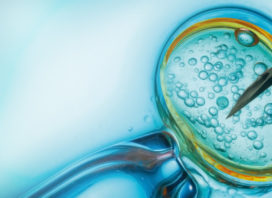hCG
Human chorionic gonadotropin is a placental hormone initially secreted by cells from the implanting conceptus during week 2. The hormone can be detected in maternal blood and urine.
ART
Assisted Reproductive Technology
CGT
Carrier Genetic Testing (CGT) is used to identify people who carry one copy of a gene mutation that, when present in two copies, causes a genetic disorder. This type of testing is offered to individuals who have a family history of a genetic disorder and to people in certain ethnic groups with an increased risk of specific genetic conditions. If both parents are tested, the test can provide information about a couple’s risk of having a child with a genetic condition.
Cryopreservation
Cryopreservation involves the slow freezing of cells in order to maintain the existing form, structure and chemical composition of all of their constituent elements for future use. Sperm can be frozen for future use either in artificial insemination or other fertility treatments, or be donated.
ICSI
Intra-Cytoplasmatic Sperm Injection is a technique that has been developed to treat cases of severe male factor infertility. The ICSI technique attempts to achieve fertilization by the injection of a single sperm into the cytoplasm (interior) of the egg. Mature eggs are freed of surrounding cells by a combination of enzyme treatment and micro dissection. Using special micromanipulation equipment (joystick-controlled robotics), the eggs are individually injected with a single sperm. Injected eggs are returned to the laboratory incubator and are treated as in conventional IVF-ET. When the eggs are returned to the incubator, they remain to develop.
IMSI
Intracytoplasmic Morphologically-Selected Sperm Injection (IMSI) technique is used during ICSI but the selection criteria of the single viable sperm to be microinjected into the egg is made through a technique called Motile Sperm Organelle Morphology Examination (MSOME) which includes the use of an ultra-high magnification microscope enhanced by digital imaging. The use of IMSI for sperm selection significantly improves fertilization rate and embryo quality and thus the IVF outcome.
IUI
Intrauterine insemination (IUI) involves a laboratory procedure to separate fast moving sperm from slower or non-moving sperm. The fast moving sperm are then placed into the woman’s womb close to the time of ovulation when the egg is released from the ovary in the middle of the monthly cycle.
IVF
In Vitro Fertilization (IVF) refers to the fertilization of a woman’s egg outside of her body. The procedure involves ovarian stimulation, removing a mature egg or eggs from the woman’s ovary, fertilizing it with semen (in vitro: outside the body), incubating the dividing cells in the laboratory and then transferring the developing embryo in the mother’s uterus at the appropriate time. The fertilization of the eggs can be carried out by means of the conventional IVF technique or by Intracytoplasmic Sperm Injection (ICSI).










